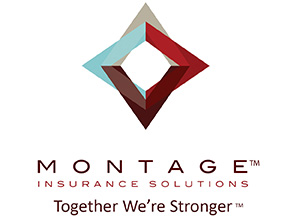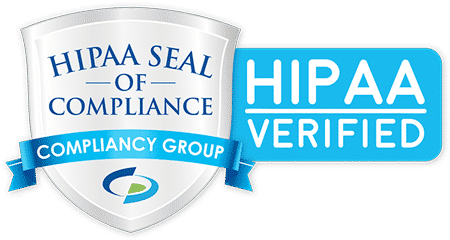It is a Man’s World No More, Women in Business
“We have come along way baby” and we still have a long way to go. As one of the few female owners of an Insurance Brokerage firm I can tell you not only can we can do it, we can do it well. It has not been easy, but it is completely worth it. Today as businesses and families struggle men and women are realizing it takes partnership. Both parents work today more than ever in history and women are rising to the top, as men are staying home more to care for the children. Studies show that men are still earning more than women according to US Business today. However, this trend is slowly changing.
USA today states, “The January Harvard Business Review includes a 360-degree feedback study by Herminia Ibarra and Otilia Obodaru. It finds that female leaders are seen by all around them to be strong in such traits as tenacity and emotional intelligence, but trail men in one important aspect: Their superiors, peers and subordinates say that women leaders lack vision.”
Still today university scholars know we are unique and have that something, they just cannot put their finger on what that something is. I have asked a few of my fellow female CFO’s, CEO’s and executive peers, what that something is. This is what they say:
Sue Fries, The Terminate Lady, CEO of Ecola and of the KKLA Sue Fries Show says, “Women are willing to be available. Churches are filled with women and if we ask why I believe that women are willing to learn and be more teachable. Men are the warriors the hunters, more stern. Women are the nurturer, the submitter. Leaders need to have a willingness to stand up for what we believe. Women are constantly seeking to do better. Sue says she believes in people and credits her unique success to being a woman. She cares for our homes with natural products and being a mother she understands the insistence on it.”
University of California-Irvine professor emeritus Judy Rosener says, “brain scans prove that men and women think differently. At age 79, Rosener says she’s concluded that a company with a mix of male and female leaders, with their differing attitudes regarding risk, collaboration and ambiguity, will outperform a competitor that relies on the leadership of a single sex. It happens that companies are dominated by men, but they probably would not perform better if dominated by women. Women aren’t better”, Rosener says, “but they bring to the table something that men don’t have.”
According to USA Today, “13 female CEOs are running the USA’s largest 500 publicly traded companies. With the Jan. 1 addition of Kullman at DuPont, 2.6% of the Fortune 500 companies have female CEOs. However, women are doing better at the largest mega-companies. With Kullman, 52, now on board, 7.4% of the largest 81 corporations with annual revenue of $31 billion and more have a woman at the helm.”
Separate studies in 2008 by Catalyst, “an organization that supports expanded opportunities for women at work, and management consultant McKinsey & Co., found that companies with more female executives and directors perform better. The employment policy Foundations says, More than 9 million women earned more than the median male income in 2002.”
Ann Freeman, CFO of Data Select Systems, Inc says, “Our computer software business is dedicated to working with the banking industry. Therefore, we have the opportunity to interact with many women at various banks across the U.S. Banking provides many opportunities for women, and most banks promote the talented women to executive positions. Even though men still outnumber women at the executive levels, the banking industry is definitely a place for women who have financial skills and accuracy, who are willing to work hard, and who aspire to become executives.”
As men stay home more with the children, women are advancing in their careers and it is ok. Susan Curry, US Presentation Executive for IBM for thirty plus years used to feel bad as she left her little ones with caregivers, pre-school and afterschool programs, but today she says she is proud of her decisions to be a working mother. She looks at her children who have graduated from college, which she supported and sees promise in their futures as they are now seeking their own careers. As basically a stay at home mom years back, I cared for her daughter along with mine. She was a great example in many ways to me. Susan has inspired by her example and I still seek her counsel.
Suzanne Sutter of Make-A-wish Foundation of Greater Los Angeles says, “I have always focused on the essentials of great leadership. Clarity is the most significant driver of human behavior. Thus, great leaders take time to clarify the values of operating principles that are important to the organization. Co-workers want to do the “right thing” and values and operating principles provide this clarity on what is “right”. Moreover, great leaders encourage the heart and in turn inspire the spirit. Personalizing appreciation and recognition for a job well done at the individual and team level is critical to achieving the “best”. We all want to feel we are making a difference…every day. Positive feedback IS the breakfast of champions!” Suzanne owned Things Remembered, a National retail company.
A most successful woman, rated as the first female billionaire, Mary Kay Ash, wrote a book; You Can Have it All, and after reading it I realized she started her company at forty. I was then forty and after ten years of working at MGM on the set of Dallas, as Kendal Chapman, the receptionist of Ewing Oil for Lorimar Pictures, I was grateful I could still call myself a stay at home mom returning home at 9:30am usually before my husband even had a chance to take our daughter Breana to his parents. Her book inspired me and now I look back and think women need mentors and she was another one of mine. Her view of sales was nurturing and it obviously works, as her company thrives still today, despite her passing. She has helped millions of women worldwide earn a living and her company, Mary Kay Cosmetics was featured three times as one of the top 100 companies to work for.
Perhaps the words we use to describe women are “nurture” and “balance”. We strive for it, need it and have the tenacity to make it happen. Today, flexibility is key in family life and business, and women are naturals at multi-tasking. Our vision is that our husband and children are loved, successful and happy. Our careers are our babies too, so it is obvious we want the same for our employees, which naturally brings success. Maybe male executives will one day see our vision, because we don’t send up flags or banners, we just do it. Our vision is written in our hearts and it includes them. – Danone Simpson


